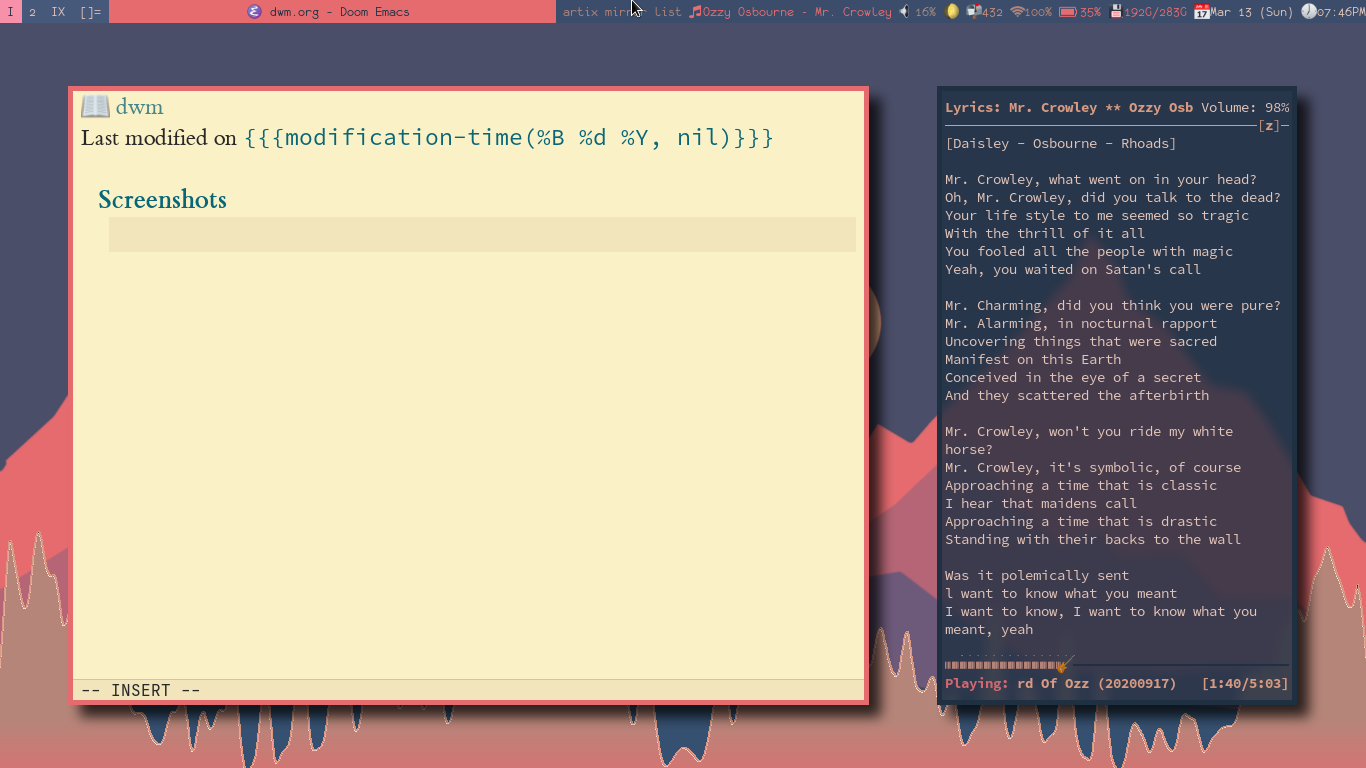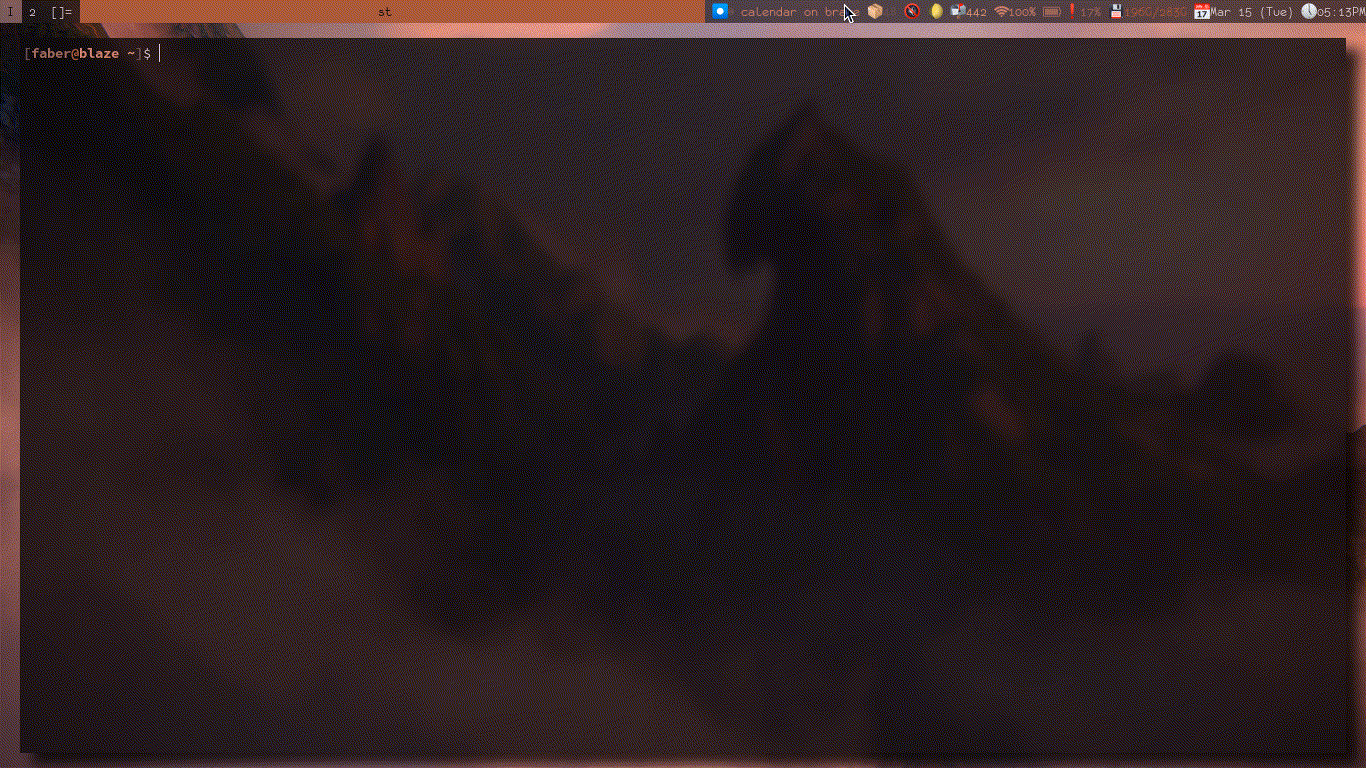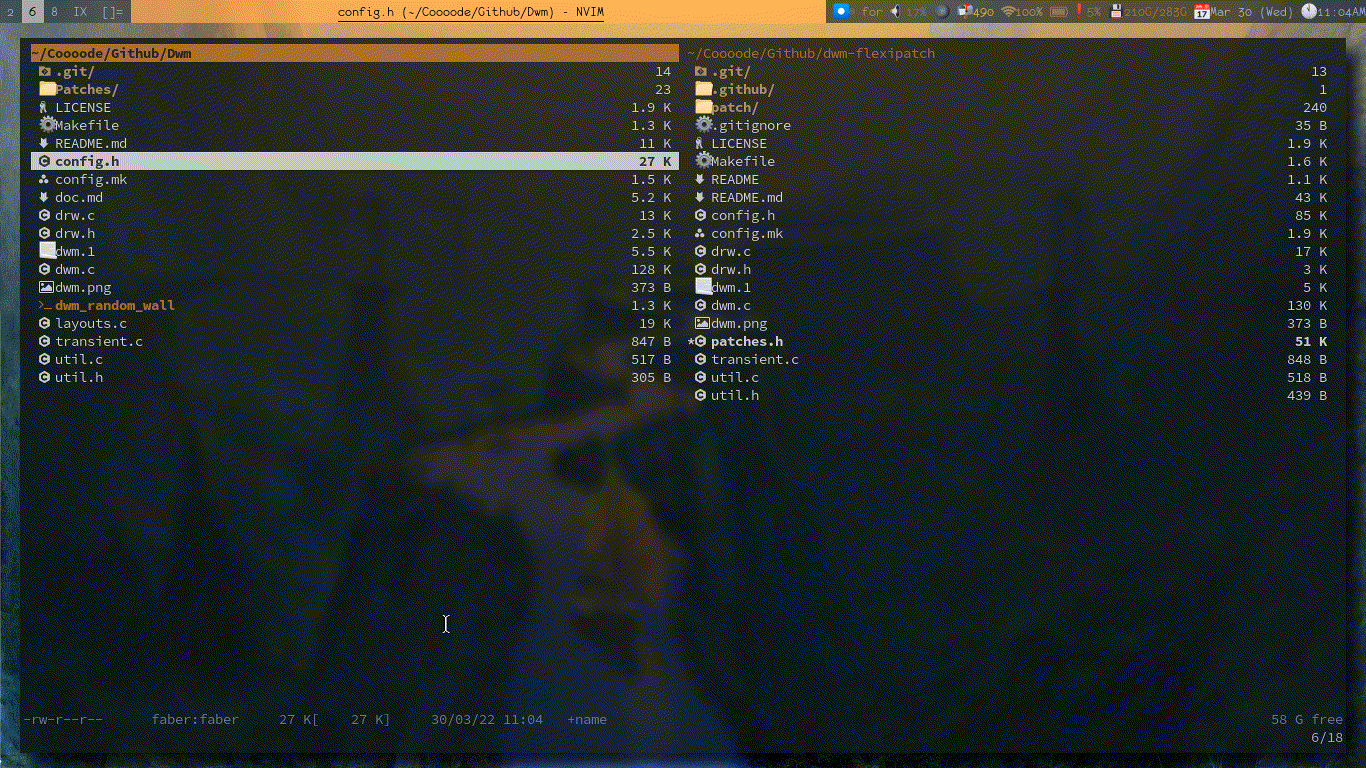

xsetroot -name ‘comunication’ and togglevacant function


demwm is a custom fork of dwm with many nice features while being minimal.
For a better description check out the README and the man page.
I started this journey with the goal of keeping a minimal footprint, I was on
xfce4 at the time watching some bald guy video. After many attempts of patching
dwm, I discovered suckless tools and got really attracted to the C language.
I ended with hardcoding good stuff (making it mine) and making the bloated features optional, with CPP.
So… What’s so special and diferent about ricing dwm than, for example, ricing
awesomeWM?
Both are done in a programing language (C, Lua):
awesomeWM and patches for dwm. This goes a bit more in depth on knowing how to program in C, since an action is just a function in dwm, I’m unsure how awesome does things but probably something similar like vim plugins.There are many things you would not want or need to use on awesomeWM. dwm
actually lacks features, thus is very suitable for those who can build their own
(from a minimal stand point dwm actually has features, which is bloat!).
imlib2) and SYSTRAY featuresApart from the pywal color sync (xresources reading), I consider two major features:
dwmblocks but integrated, with different colors and asynchronous (non blocking). My build allows to have a status bar handled and configured by dwm itself.demwm without pressing any keybinding (say in a script) you can use the same functions you use in config.h, adding it to demwm command (additional version and help functions). For example:$ demwm togglefloating
This is similar to using xsetroot -name but it won’t collide with the WMNAME atom.
I’ve decided to integrate dwmblocks into dwm itself. Why? Some reasons:
dwm and dwmblocks would comunicate in between with the use of signal(1)s. I saw this a bit ’too much’. These got a limit.


xsetroot -name ‘comunication’ and togglevacant function

